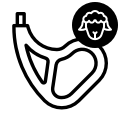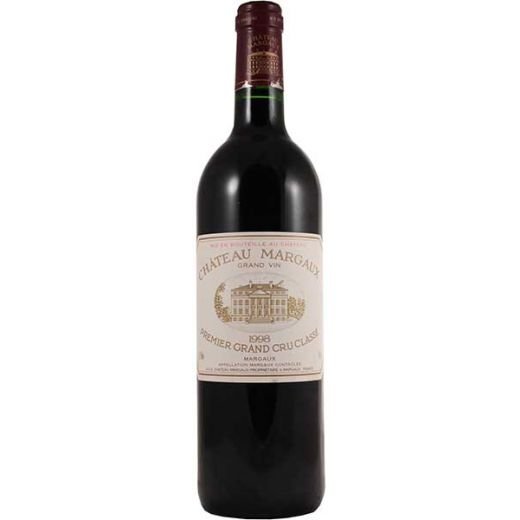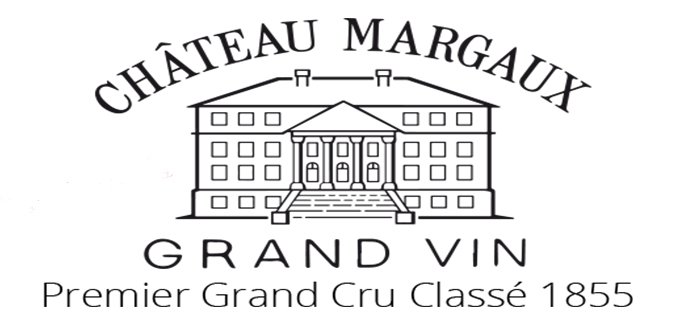Chateau Margaux 1er Cru Classe 1998
ประเทศ (Country)
France
ขนาดบรรจุ (bottle size)
750 ml
ประเภทไวน์ (Wine Type)
Red Wine
แคว้น (Wine Region)
Bordeaux, Bordeaux - Margaux
พันธุ์องุ่น (Grape Variety)
Blended
ปี (vintage)
1998 [**VINTAGE MAY CHANGE]
characteristics
บอดี้ (Body)
Full
Full
Full
แอซิดิตี้ (Acidity)
High
High
High
แทนนิน (Tannin)
High
High
High
1998 [**VINTAGE MAY CHANGE]
รายละเอียดสินค้า
It’s difficult to summarise in a few lines, the long and passionate history of the estate, it could be entitled “Once upon a time Château Margaux”.
Known since the XII century, it was called “La Mothe de Margaux” (the Margaux mound) and, at that time, it didn’t have any vines. The old name didn’t happen by chance; in a flat region like the Médoc, the slightest “mound” was easily distinguished and the greatest wines are always produced on sloping land that ensures good drainage.
In 1152, Aquitaine fell to the advance of England until 1453 and so Bordeaux wines benefited Made from this new market. Bordeaux “claret” was adopted as a table wine by Richard the Lion Heart, King of England in the XII century.
The successive owners of “La Mothe de Margaux” were, of course, important lords but we had to wait for the arrival of the Lestonnac family to set up the estate as we know it today. Pierre de Lestonnac succeeded, in the ten years Made from 1572 to 1582, in completely restructuring the property as well as the vineyard and anticipated the general evolution of the Médoc that had started to abandon cereal growing in favour of vines.
At the end of the XVII century, Château Margaux occupied 265 hectares, land that wouldn’t be divided again. A third of the estate was dedicated to vines, which is still the case today.
England and Holland drank “claret”, a pale wine that didn’t age well. Château Margaux became the epitome for the art of wine-making and the hierarchy between the different Bordeaux growths was already being drawn up.
Château Margaux was born.
Known since the XII century, it was called “La Mothe de Margaux” (the Margaux mound) and, at that time, it didn’t have any vines. The old name didn’t happen by chance; in a flat region like the Médoc, the slightest “mound” was easily distinguished and the greatest wines are always produced on sloping land that ensures good drainage.
In 1152, Aquitaine fell to the advance of England until 1453 and so Bordeaux wines benefited Made from this new market. Bordeaux “claret” was adopted as a table wine by Richard the Lion Heart, King of England in the XII century.
The successive owners of “La Mothe de Margaux” were, of course, important lords but we had to wait for the arrival of the Lestonnac family to set up the estate as we know it today. Pierre de Lestonnac succeeded, in the ten years Made from 1572 to 1582, in completely restructuring the property as well as the vineyard and anticipated the general evolution of the Médoc that had started to abandon cereal growing in favour of vines.
At the end of the XVII century, Château Margaux occupied 265 hectares, land that wouldn’t be divided again. A third of the estate was dedicated to vines, which is still the case today.
England and Holland drank “claret”, a pale wine that didn’t age well. Château Margaux became the epitome for the art of wine-making and the hierarchy between the different Bordeaux growths was already being drawn up.
Château Margaux was born.
wine score
Profile
พันธุ์องุ่นผสม (Grape Blended)
Bordeaux Blended
รสสัมผัส (Palate)
Shows the estate's telltale black tea and lilac hints through the finish, with lovely grace and charm that wins out over the sinewy structure.
สี (Colour)
A dense ruby/purple color.
กลิ่น (Aroma)
Shows a lightly taut feel, with plum skin and cherry pit notes melded into the core of damson plum, blackberry and mulled cherry fruit.
รสสัมผัส (Palate)
Shows the estate's telltale black tea and lilac hints through the finish, with lovely grace and charm that wins out over the sinewy structure.
จับคู่อาหาร (Wine Pairing)




:Beef

:Lamb

:Hard Cheese
แบรนด์




